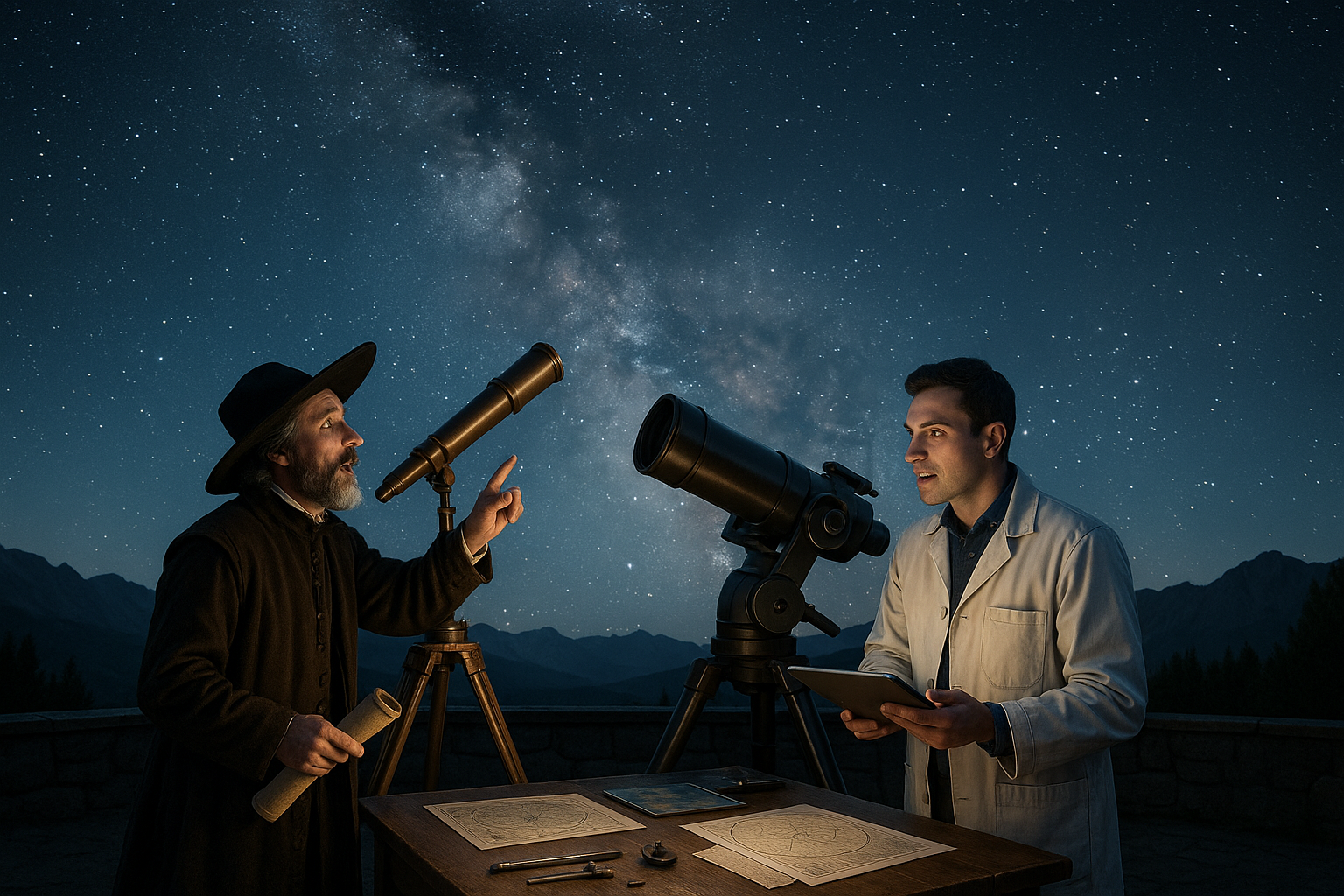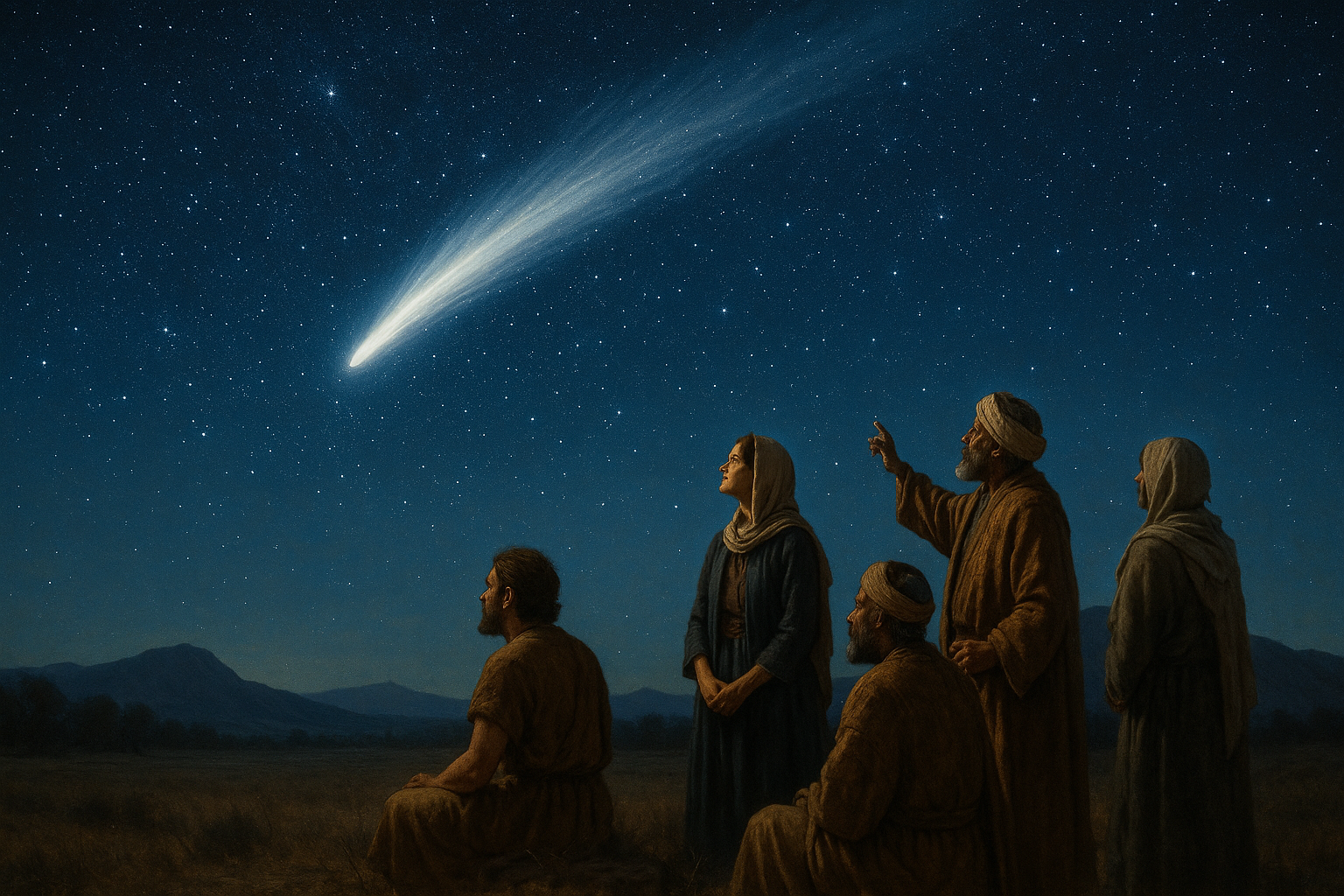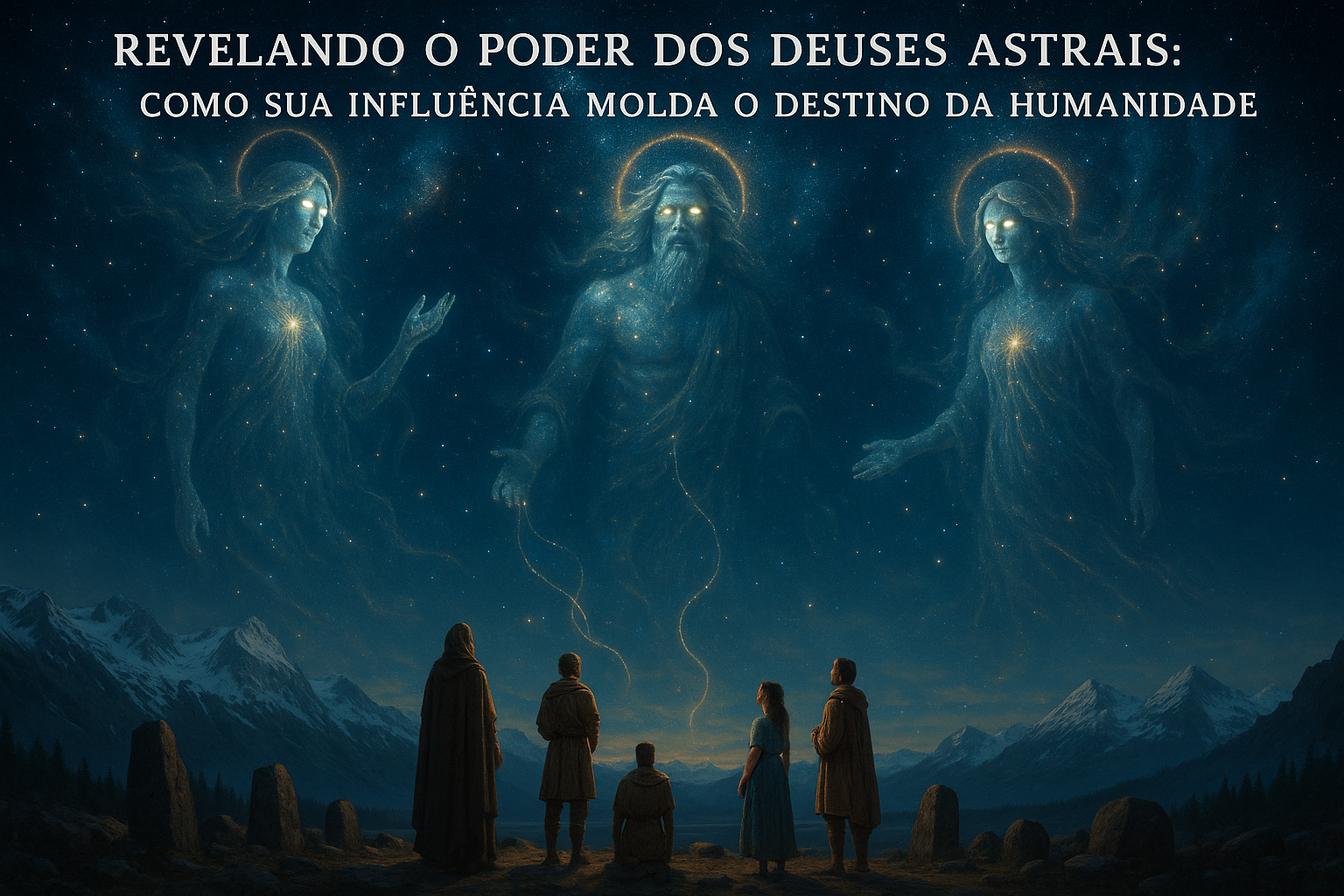In a world where reality often confines our imagination, the allure of the mystical offers an escape into realms where the ordinary is left behind and the extraordinary reigns supreme. The tapestry of folklore and mythology is rich with tales of celestial creatures that captivate the human psyche and fuel our eternal quest for wonder. These narratives, handed down through generations, reflect the values, fears, and hopes of the cultures from which they spring. They invite us into a universe where the boundary between the natural and the supernatural blurs, and where animals are not just inhabitants of our world, but are also keepers of wisdom, magic, and mystery. 🌌
In this article, we embark on a journey to uncover the enigmatic world of celestial creatures as depicted in folklore and mythology. From the majestic phoenix, with its fiery resurrection symbolizing rebirth and renewal, to the elusive dragon, a creature of immense power and wisdom found in diverse cultures across the globe, these mythical beings serve as conduits to understanding the human experience. We will delve into the fascinating stories that have immortalized these creatures, exploring their origins and the profound meanings they hold within their respective mythological frameworks.
Our exploration will guide us through a myriad of cultural landscapes, revealing the unique ways in which different societies perceive and revere these mythical animals. We will examine the protective spirit of the Native American Thunderbird, whose powerful wings are said to create thunder, and the Japanese Kirin, a chimerical beast whose appearance is thought to herald the arrival of a wise leader. These stories are not merely flights of fancy; they are integral to the cultural fabric of the societies that birthed them, offering insights into their worldviews and the values they cherish.
Join us as we traverse the ages and continents, unveiling the celestial creatures that have captivated imaginations and inspired countless tales. Whether you are a seasoned mythologist or a curious newcomer, this exploration promises to enrich your understanding of the symbolic significance of animals in folklore and mythology. Together, we will unlock the secrets of these mystical beings and discover how their stories continue to resonate in our modern world, offering timeless lessons and a glimpse into the limitless potential of human creativity. ✨
Introduction to Celestial Creatures in Mythology
Throughout the ages, humans have been fascinated by the stars, the moon, and the endless expanse of the sky. This fascination has given birth to myths and legends filled with celestial creatures, beings that bridge the gap between the earth and the heavens. These mystical animals are often depicted as guardians, messengers, or symbols of divine power. As we delve deeper into this topic, we’ll explore various cultures and their unique interpretations of celestial creatures, uncovering the rich tapestry of folklore that spans the globe.
From ancient Greek myths to Native American legends, celestial creatures serve as embodiments of the mysteries of the universe. They are often seen as symbols of wisdom, strength, and guidance. In many traditions, these creatures are associated with specific celestial bodies, such as the sun, the moon, or constellations, and their stories are intertwined with the natural world. The enduring allure of these mythical animals lies in their ability to captivate the imagination, offering insights into human hopes, fears, and dreams.
As we explore the world of celestial creatures, it’s essential to understand their significance within the context of their respective cultures. These beings are not just fictional characters; they are vital components of cultural identity, embodying the values, beliefs, and aspirations of the societies that created them. By examining the stories and symbolism of celestial creatures, we gain a deeper appreciation for the rich cultural heritage they represent and the universal themes they convey.
The Role of Celestial Creatures in Different Cultures
Celestial creatures appear in a wide range of mythologies, each with its own unique characteristics and symbolism. In Greek mythology, for example, the phoenix is a symbol of rebirth and renewal. This mythical bird is said to burst into flames upon death, only to rise from its ashes, embodying the cyclical nature of life and the potential for transformation. The phoenix’s association with the sun further emphasizes its connection to celestial themes, as it is often depicted soaring across the sky in a blaze of glory.
In Chinese mythology, the dragon is a revered celestial creature representing power, wisdom, and prosperity. Unlike the fearsome dragons of Western folklore, Chinese dragons are benevolent beings associated with rain and agriculture. They are often depicted as majestic serpentine creatures that soar through the clouds, their presence believed to bring good fortune and harmony. The dragon’s connection to the celestial realm is further emphasized by its role as a guardian of the heavenly palace and a symbol of imperial authority.
Native American legends also feature celestial creatures, such as the Thunderbird. This powerful being is often depicted as a giant bird with wings that create thunder when they flap, and lightning flashes from its eyes. The Thunderbird is a symbol of strength and protection, often seen as a guardian spirit that watches over the people. Its association with the sky and weather phenomena highlights its role as a bridge between the earthly and celestial realms.
Symbolism and Interpretations of Celestial Creatures
The symbolism of celestial creatures is deeply intertwined with the cultures that created them, reflecting their values, beliefs, and aspirations. These mythical animals often serve as metaphors for human experiences, embodying themes of transformation, power, and protection. For example, the phoenix’s association with rebirth and renewal can be seen as a metaphor for personal growth and the ability to overcome challenges. Its fiery nature also symbolizes passion and creativity, inspiring individuals to pursue their dreams with determination and courage.
Similarly, the dragon’s symbolism in Chinese culture reflects the importance of balance and harmony. As a creature associated with both water and fire, the dragon embodies the duality of nature and the need for equilibrium. Its presence in mythology serves as a reminder of the interconnectedness of all things and the importance of maintaining harmony in one’s life and surroundings.
The Thunderbird’s symbolism in Native American legends highlights the importance of community and protection. As a guardian spirit, the Thunderbird embodies the strength and unity needed to overcome adversity and ensure the well-being of the tribe. Its connection to the sky and weather phenomena also emphasizes the importance of respecting and understanding the natural world.
Comparative Analysis of Celestial Creatures
To better understand the similarities and differences among celestial creatures in various cultures, we can examine their characteristics and roles through a comparative analysis. The table below provides an overview of some key features of these mythical animals:
| Culture | Celestial Creature | Symbolism | Associated Elements |
|---|---|---|---|
| Greek | Phoenix | Rebirth, Renewal | Fire, Sun |
| Chinese | Dragon | Power, Prosperity | Water, Clouds |
| Native American | Thunderbird | Strength, Protection | Thunder, Lightning |
Each of these celestial creatures serves a unique role within its respective culture, yet they share common themes of transformation, power, and protection. Their enduring appeal lies in their ability to transcend cultural boundaries, offering universal insights into the human condition.
The Modern Relevance of Celestial Creatures
Despite their ancient origins, celestial creatures continue to captivate the modern imagination. They appear in literature, film, and art, serving as powerful symbols and sources of inspiration. Their stories resonate with audiences across the globe, reflecting timeless themes that are as relevant today as they were in the past.
In contemporary literature and film, celestial creatures often serve as metaphors for personal growth and transformation. Characters may encounter these mythical animals during pivotal moments in their journey, drawing strength and wisdom from their presence. The phoenix, for example, is frequently used as a symbol of resilience and rebirth, inspiring individuals to rise above challenges and embrace new beginnings.
Artists and designers also draw inspiration from celestial creatures, incorporating their imagery into various forms of creative expression. From intricate tattoos to stunning sculptures, these mythical animals continue to inspire and captivate with their beauty and symbolism. Their presence in the modern world serves as a reminder of the enduring power of mythology and the timeless allure of the celestial realm.
For a deeper dive into the symbolism and cultural significance of celestial creatures, watch the following video that explores their roles in mythology and popular culture:
Conclusion
In conclusion, the exploration of celestial creatures within folklore and mythology opens a captivating window into the human psyche and our intrinsic desire to understand the cosmos and our place within it. Throughout this article, we delved into various myths and legends from different cultures, each presenting unique celestial beings that embody the mysteries of the universe. From the majestic Chinese dragon, revered for its wisdom and power, to the enigmatic Thunderbird of Native American lore, these creatures transcend mere imagination, symbolizing deeper truths and societal values.
The significance of celestial creatures in folklore is multifaceted. They serve not only as bridges between the earthly and the divine but also as reflections of cultural identity and collective consciousness. By examining these mythological beings, we gain insights into how ancient civilizations interpreted natural phenomena and existential questions. Such stories have been pivotal in passing down traditions, morals, and teachings through generations, ensuring cultural continuity and cohesion.
Moreover, the recurring motifs and characteristics of celestial creatures across different mythologies highlight the universality of human experience. Despite geographical and temporal distances, common themes such as creation, destruction, protection, and transformation emerge, underscoring a shared quest for meaning and understanding. These narratives reveal how deeply interconnected humanity is, emphasizing our collective imagination’s power to transcend boundaries and unite diverse cultures under a common celestial tapestry.
The enduring fascination with celestial creatures can also be attributed to their representation of the unknown. They embody the mysteries of the universe that science has yet to explain fully, sparking curiosity and inspiring exploration. In an era where scientific advancements have demystified much of the natural world, these mythical beings remind us of the beauty of wonder and the thrill of discovery. They encourage us to look beyond the tangible and embrace the fantastical, nurturing creativity and innovation.
As we reflect on the mystical world of celestial creatures, it becomes evident that these myths serve as more than mere stories; they are vital components of our cultural heritage and identity. They challenge us to ponder profound questions about existence, morality, and the cosmos, fostering a deeper connection with ourselves and the world around us. In understanding and appreciating these mythical narratives, we enrich our knowledge and empathy, broadening our perspectives and fostering cultural appreciation.
The importance of preserving and studying folklore and mythology cannot be overstated. In a rapidly changing world, where cultural homogenization threatens to erode traditional narratives, it is crucial to safeguard these stories for future generations. They are repositories of wisdom, creativity, and history, offering invaluable lessons and insights. By sharing these tales, we honor our ancestors and keep the magic of storytelling alive.
We encourage you, dear reader, to delve deeper into the world of celestial creatures. Explore the myths of your own culture or those of others, and see how these narratives shape your understanding of the universe. Engage in discussions, share your insights, and apply the wisdom gleaned from these stories in your daily life. Whether it be through artistic expression, academic pursuit, or personal reflection, let the wonder of celestial creatures inspire you to embark on your journey of exploration and discovery.
If you’re interested in exploring further, consider visiting reputable sources such as the Encyclopedia Mythica (http://www.pantheon.org), which offers extensive resources on mythology from around the world, or the American Folklore website (http://www.americanfolklore.net), which provides a rich collection of myths and legends from various cultures. These platforms provide a wealth of information and can serve as valuable tools in your quest to understand the mythical realm.
In conclusion, the study of celestial creatures in folklore and mythology is not just an academic pursuit but a celebration of human creativity and the timeless quest for understanding. It bridges the gap between the past and the present, the known and the unknown, reminding us of the boundless potential of the human spirit. As you navigate the mystical world of these mythical beings, may you find inspiration, wonder, and a deeper appreciation for the stories that define us. 🌌✨
- Explore the symbolism of celestial creatures in different cultures.
- Learn about the enduring appeal of mythical animals in modern times.
- Discover how celestial creatures serve as metaphors for human experiences.
Toni Santos is a visual storyteller and cosmic interpreter whose work illuminates the ancient skywatchers and their prehistoric astronomy—the profound ways early humans observed and revered the heavens before written history. Through a visionary lens, Toni explores how the stars, planets, and celestial cycles shaped myth, ritual, and survival in cultures lost to time.
Rooted in a fascination with archaic observatories, stone alignments, and celestial symbolism, Toni’s creative journey reveals the deep human impulse to understand and harmonize with the cosmos. From lunar phases guiding planting seasons to the sacred paths of the Milky Way, each of his works embodies the awe and knowledge encoded in the night sky.
Combining artistic craftsmanship with archaeological insight, Toni’s pieces evoke the mystery and precision of prehistoric astronomers. His work does more than depict—it channels the timeless dance between earth and sky, bridging ancient wisdom with contemporary wonder.
As the visionary behind Vizovex, Toni shares curated visuals, essays, and symbolic studies that invite others to reconnect with the cosmic heritage written in stone and starlight. His creations are a call to look upward, to listen to the silent stories told by the stars, and to honor the first astronomers who mapped the heavens with reverence and ingenuity.
His work is a tribute to:
The celestial wisdom of prehistoric peoples
The sacred geometry of ancient observatories
The enduring bond between human culture and the cosmos
Whether you’re a stargazer, a scholar of ancient mysteries, or someone captivated by the universe’s earliest storytellers, Toni welcomes you to journey through a space where the sky is both map and myth—one constellation, one ritual, one revelation at a time.




